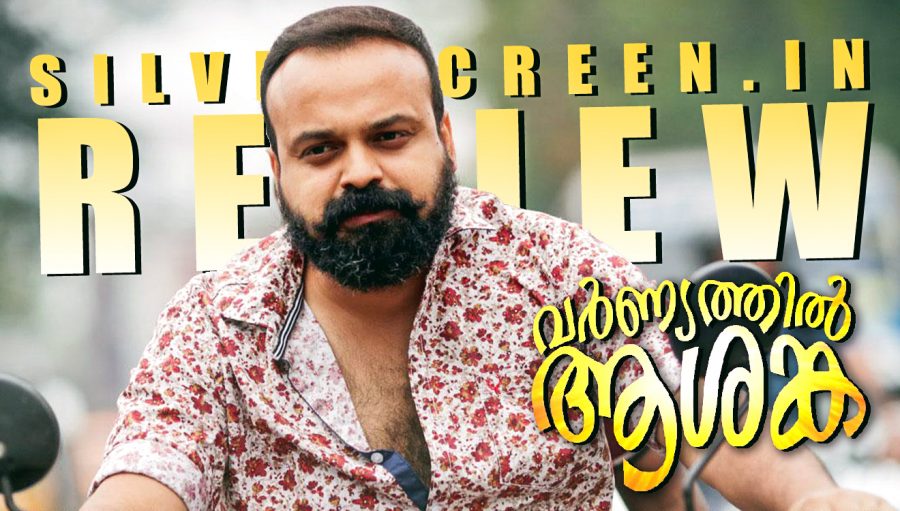Siddharth Bharathan’s Varnyathil Aashanka is not a very smart film. It takes a while to find its rhythm, and sitting through its initial 60 minutes is not easy. The character establishment sequences are long-winded, and, in the first half, the film often meanders and digresses to insipid, monotonous comic sequences.
But, beyond this, it is an impressive caper and a social satire backed by some brilliantly executed scenes and great acting.
In the latter half, the characters find their purpose, and their antics start making sense. The narrative begins to take a fantastic spin, and sometime before the end credits, Suraj Venjarammood delivers a marvellous performance reminiscent of the vintage Mollywood icon, Jagathy Sreekumar.
The film is centered around a bunch of swindlers in the suburbs of Thrissur, who team up for a heist. The unofficial leader of the gang is Shivan (Kunchakko Boban) whose claim to fame is a moderately successful jewellery robbery. His friend, Wilson (Chemban Vinod), a simpleton with no prior experience in the field of theft, joins the gang because he finds it cool. Pratheesh (Shine Tom) is a young loafer in dire need of money. Gilbert (Manikantan) is a seasoned petty thief who wants to go up the professional ladder. The four men hatch plan to rob a reputed jewellery store in the locality on the night after a Hartal. While they are on it, a fifth man makes an inadvertent entry to the scene, and steals their thunder.
Varnyathil Aashanka has the simplistic spontaneity seen in movies such as Angamaly Diaries and Maheshinte Prathikaaram, although Siddharth’s effort fails to match up to their charm. The dialogues and the actors’ performances are natural. The characters are rooted in their milieu. The way Shivan deals with his brother, a young political leader, is diagonally opposite to how Dayanandan (Suraj Venjarammood) handles people in his surroundings. The latter, an irresponsible alcoholic, is sly and tactical, while the former is impulsive and short-tempered. If Shivan is always dressed in flamboyant colours, Dayanandan’s shirts are dull. Later, during the robbery, you see this contrast in their nature play out strikingly. Wilson, with his naivety and a goofy obsession with coconuts, is a character akin to Mannar Mathai of Mannar Mathai Speaking. And, these quirks stay with the characters through the movie; Siddharth has skilfully maintained the character consistency.
Some rough improvisations have worked out marvellously. On the night of the robbery, Dayanandan walks home alone through the town’s deserted roads. He is drunk, and is in the mood for some music. He plays on his phone a classic Vayalar number with poetic lyrics that he animatedly lip-syncs to. You see Dayanandan dancing and singing with abandon, and walking towards the spot where the clumsy thieves are at work. You can sense the mounting tension in the proceedings – this dancing fool could spoil their plans – but, at the same time, you can’t help laugh.
The women in the film are victims of the wayward life the men lead, but the film does not focus on delivering a message of social revolution or women’s empowerment. Dayanandan’s spouse (Rachana Narayanankutty) is a suffering wife, but also a smart individual who has adapted to her surroundings. Similarly, Gayathri Suresh’s Thanima knows the tricks to stay afloat in a masculine world. These women are funny and lively – a quality that makes up for the meagre screen-time they get.
The use of chaste Malayalam in the title of the film extends to the title cards too, where Subtitles are called ‘Upasheershakam‘ and Financial Controlling, ‘Saambathika Niyathranam‘. Some parts of the narrative are styled on the lines of the caper movies of the black-and-white era. For instance, the use of jump cuts and the effect used in the flashback transition.
The resemblances end there. Varnyathil Aashanka is a social satire that isn’t interested in making characters appear as heroes or villains. There are clashes between political parties, and momentous political resolutions in the background, but the film’s focus is on the fascinating human instinct of survival, which, when watched through Siddharth’s camera, is great fun.
Recommended
But, this love for the chaotic moments of daily life is also what causes the film fall short of its potential. At times, the strain taken to keep things simple is glaringly evident. The camera gets carried away by the nondescript interiors of Dayanandan’s house, and lingers there too long. That sequence, like several others, fails to engage. The film’s pace is undesirably inconsistent.
Shivan is, perhaps, the most testosterone-driven role taken up by Kunchakko Boban in his career. The actor perfects the impulses, ego conflicts and the recklessness of Shivan. Chemban, Manikantan and Shine play their parts flawlessly, but the one who grabs the limelight is Suraj Venjarammood, who mesmerised the audience in his last screen outing in Dileesh Pothan’s Thondimuthalum Drisksakshiyum. The actor is going through a wonderful phase in his highly-impressive career. At first glance, he looks like an unexceptional man, but in a matter of seconds, transforms into a genius artiste, illuminating the screen with his fine talent.


